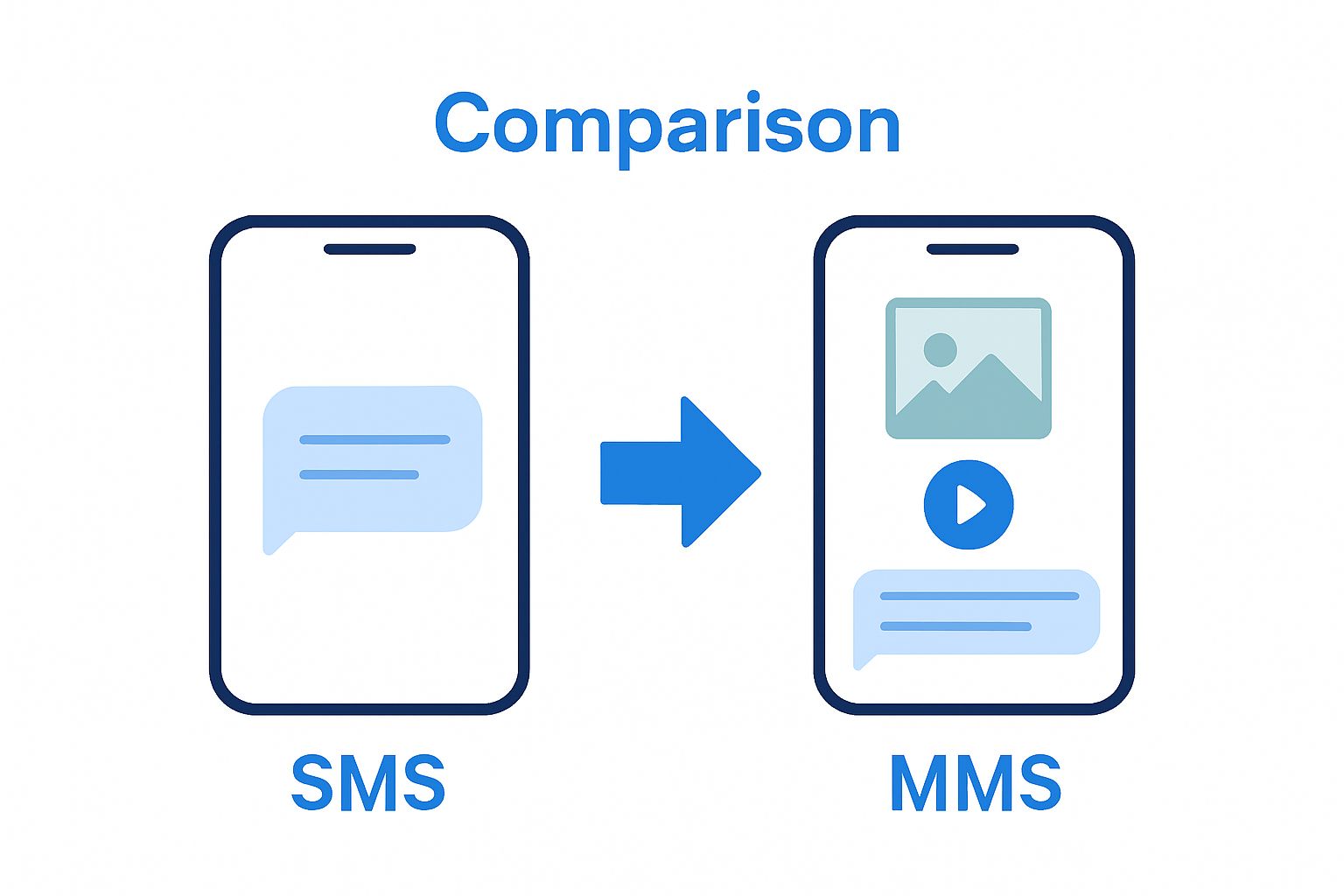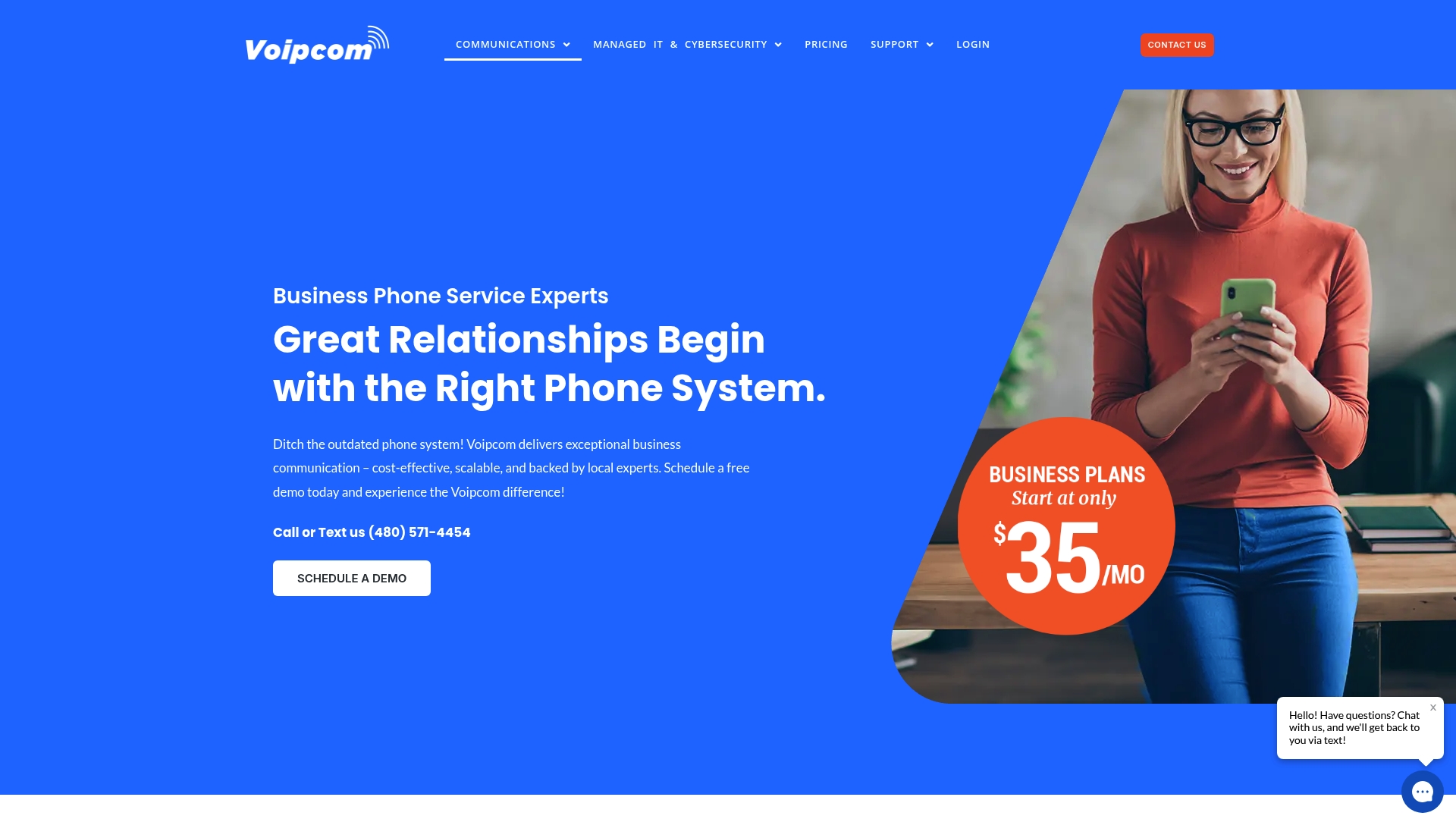Business messaging used to mean short, simple texts and limited communication. SMS reaches nearly every mobile device on the planet and remains the go-to for instant updates. Yet most companies do not realize just how much more is possible today. MMS brings images, videos, and sound into the mix, transforming plain messages into attention-grabbing stories. This shift is not just high-tech flair. It is changing how brands connect with their audience and how teams share critical info—and the real surprise is how much even a basic message can matter.
Table of Contents
- Defining Business Sms And Mms: What Are They?
- The Importance Of Choosing Between Sms And Mms For Businesses
- How Sms And Mms Work: Technical Foundations Explained
- Key Differences Between Sms And Mms In Business Applications
- Practical Use Cases And Considerations For Sms And Mms
Quick Summary
| Takeaway | Explanation |
|---|---|
| Choose SMS for short, urgent updates | SMS is ideal for concise messages up to 160 characters, making it effective for quick notifications. |
| Use MMS for rich media content | MMS allows businesses to send images, audio, and video, offering a more engaging communication option. |
| Consider costs and technical needs | Evaluate transmission costs, compatibility, and bandwidth requirements when choosing between SMS and MMS for optimal effectiveness. |
| Align messaging with communication goals | Select SMS for immediate updates and MMS for complex or promotional messages to enhance audience engagement. |
| Industries utilize SMS and MMS differently | Different sectors leverage SMS and MMS uniquely, tailoring strategies to their specific communication needs and customer engagement requirements. |
Defining Business SMS and MMS: What Are They?
Communications technology has transformed how businesses interact with customers and team members through messaging platforms. Two primary methods of digital communication emerge: SMS (Short Message Service) and MMS (Multimedia Messaging Service). Understanding these communication tools is crucial for modern business strategies.
The Basics of SMS
SMS represents text-based communication limited to 160 characters. Businesses utilize SMS for rapid, direct messaging that enables quick information transfer. According to the Federal Communications Commission, SMS provides a straightforward communication channel for brief, critical updates.
Key characteristics of SMS include:
- Text-only message transmission
- Maximum 160-character limit
- Fast delivery across mobile networks
- Low data usage requirements
Understanding Multimedia Messaging (MMS)
MMS expands messaging capabilities beyond text, allowing businesses to send rich media content. This includes images, audio files, video clips, and longer text messages. Technical experts note that MMS provides a more dynamic communication approach compared to traditional SMS.
Businesses can leverage MMS for:
- Sending product images
- Sharing promotional graphics
- Transmitting short video presentations
- Delivering more complex visual communications
While SMS remains valuable for concise updates, our comprehensive business messaging guide offers deeper insights into effective communication strategies that maximize these digital tools.
The Importance of Choosing Between SMS and MMS for Businesses
Selecting the appropriate messaging platform can significantly impact business communication effectiveness. While SMS and MMS appear similar, they serve distinctly different purposes in professional environments. Understanding their unique strengths helps organizations make strategic communication decisions.
Cost and Technical Considerations
Businesses must carefully evaluate the financial and technical implications of SMS versus MMS communications. According to the Cellular Telecommunications Industry Association, SMS offers near-universal compatibility and cost-effectiveness.
Key technical factors include:
- Message transmission costs
- Device compatibility
- Network infrastructure requirements
- Data consumption rates
Strategic Communication Objectives
Choosing between SMS and MMS depends on specific communication goals. SMS excels in delivering concise, immediate information, while MMS allows for more engaging, visually rich messaging. Our MMS business messaging guide provides deeper insights into leveraging multimedia communication strategies.
Consider these strategic communication objectives:
- Urgent notifications and alerts
- Marketing campaign delivery- Customer engagement and interaction
- Information complexity and presentation needs
By understanding the nuanced differences between SMS and MMS, businesses can optimize their communication strategies, ensuring messages are not just sent, but effectively received and acted upon.
Below is a comparison table summarizing the main differences between SMS and MMS for business communications, making it easy to see which messaging type fits specific needs.
| Feature / Characteristic | SMS (Short Message Service) | MMS (Multimedia Messaging Service) |
|---|---|---|
| Content Type | Text only | Text, images, audio, video |
| Character Limit | 160 characters | Typically up to 1,600 characters or more |
| Delivery Speed | Fast | Slightly slower due to media file transmission |
| Data Usage | Very low | Higher, depends on media file size |
| Cost per Message | Lower | Higher due to bandwidth and media content |
| Device Compatibility | Nearly universal | Dependent on device and network support |
| Best Use Case | Urgent updates, simple alerts | Promotional content, product images, rich media |
How SMS and MMS Work: Technical Foundations Explained
Modern digital communication relies on sophisticated network protocols that enable instant messaging across various devices and platforms. Understanding the technical foundations of SMS and MMS reveals the complex infrastructure supporting business communications.
Signal Transmission and Network Protocols
At their core, SMS and MMS operate through cellular network signaling systems that transmit data packets between devices. Telecommunications research demonstrates how these messaging technologies utilize specialized communication channels within mobile networks.
Key transmission characteristics include:
- Utilizing dedicated control channels
- Routing messages through cellular towers
- Employing packet-switching technology
- Managing message delivery across different network providers
Message Encoding and Processing
Each message undergoes a complex encoding process that determines its transmission characteristics. SMS messages are typically encoded using GSM 7-bit alphabet or UCS-2 encoding, which enables compact text transmission. MMS, conversely, uses more advanced MIME (Multipurpose Internet Mail Extensions) protocols to handle multimedia content.
Technical processing steps involve:
- Message size and format validation
- Compression of multimedia content
- Encryption and security protocols
- Metadata tagging for routing
Businesses seeking deeper insights into messaging technologies can explore our comprehensive business messaging resources to understand the intricate technical landscape of digital communication platforms.
Key Differences Between SMS and MMS in Business Applications
Business communication technologies demand precision and flexibility. While SMS and MMS might appear similar, they offer distinctly different capabilities that can significantly impact organizational communication strategies.
Content and Transmission Capabilities
The fundamental distinction between SMS and MMS lies in their content transmission capabilities. According to the Cellular Telecommunications Industry Association, SMS is strictly text-based with limited character count, whereas MMS allows rich multimedia content transmission.
Key content transmission differences include:
- SMS character limitations (160 characters)
- MMS support for images, audio, and video
- Text-only versus multimedia communication
- Varied file size and format support
Cost and Technical Infrastructure
Businesses must consider the technical and financial implications of choosing between SMS and MMS. The transmission infrastructure and associated costs differ significantly between these communication methods. Bandwidth requirements and network compatibility play crucial roles in determining the most appropriate messaging solution.
Critical comparative factors encompass:
- Per-message transmission costs
- Data consumption rates
- Device and network compatibility
- Scalability of communication platform
Our SMS communication archives offer additional insights into optimizing messaging strategies for diverse business needs. Understanding these nuanced differences enables organizations to select the most effective communication tool for specific operational requirements.
Practical Use Cases and Considerations for SMS and MMS
Business communication strategies require nuanced approaches to maximize engagement and efficiency. Understanding the strategic applications of SMS and MMS can help organizations optimize their messaging infrastructure and customer interaction protocols.
Industry-Specific Messaging Strategies
Different sectors leverage SMS and MMS uniquely based on their specific communication requirements. According to the Federal Communications Commission, businesses can strategically deploy these technologies for targeted communication objectives.
Industry-specific messaging applications include:
- Healthcare appointment reminders
- Financial transaction alerts
- Retail promotional campaigns
- Service industry scheduling and updates
Customer Engagement and Marketing Considerations
Marketing teams must carefully evaluate the strengths of SMS and MMS to create compelling communication strategies. SMS delivers immediate, concise information, while MMS enables rich, visually engaging content. The choice depends on campaign objectives, target audience preferences, and technical capabilities.
Key engagement factors to consider:
The following table highlights industry-specific use cases for SMS and MMS, helping illustrate how different sectors apply these messaging solutions in real-world settings.
| Industry | SMS Use Case | MMS Use Case |
|---|---|---|
| Healthcare | Appointment reminders | Visual instructions, health tips |
| Finance | Transaction alerts | Promotional offers, infographics |
| Retail | Flash sale announcements | Product images, coupon graphics |
| Service Industry | Scheduling and updates | Before/after service visuals |
| Marketing | Event notifications | Event invitations, video promotions |
| Education | Class start reminders | Event flyers, report cards |
| Hospitality | Booking confirmations | Welcome videos, facility images |
- Message open and response rates
- Visual content impact
- Customer demographic preferences
- Cost-effectiveness of communication channels
Our comprehensive business messaging guide offers deeper insights into crafting effective communication strategies that align with organizational goals and technological capabilities.
Upgrade Your Messaging: Make Every Business Message Count
Struggling to decide between SMS and MMS for your business? Unclear on how these technologies impact your ability to reach customers quickly and effectively? Many organizations face the same frustration. The right messaging choice can mean the difference between instant customer connection and your message getting lost. With so many options, it can be overwhelming to balance cost, compatibility, and the need for both urgent alerts and engaging promotions. Voipcom cuts through that complexity by offering secure, business-ready SMS and MMS solutions. Our cloud-based platform gives you the power to send concise SMS for critical updates or eye-catching MMS for marketing—all while staying cost-efficient and reliable. Explore our business messaging solutions for a clearer path forward.
Stop letting outdated communication systems hold you back. See how Voipcom can help your organization move past legacy technology. Ready to simplify your messaging, reduce costs, and boost your impact? Contact Voipcom today and discover easy, scalable communications designed for modern businesses in Arizona, Colorado, and beyond.
Frequently Asked Questions
What are the key differences between SMS and MMS for business communications?
SMS is a text-only messaging service limited to 160 characters, perfect for quick updates. In contrast, MMS supports multimedia content, allowing businesses to send images, videos, and longer messages. Choose SMS for simple notifications and MMS for richer engagement.
How can businesses decide whether to use SMS or MMS for their marketing campaigns?
Evaluate your campaign objectives and audience preferences. Use SMS for immediate, straightforward messages and opt for MMS when visual content is essential to engaging customers. Start by analyzing past campaign data to identify what resonates best with your target audience.
What are the cost implications of using SMS versus MMS for my business?
SMS is typically less costly compared to MMS, which involves higher data usage due to multimedia content. Calculate your messaging needs based on estimated volume; for example, if you plan to send out 1,000 messages, determine the costs associated with each service to budget accordingly.
How can I ensure my SMS and MMS messages reach the intended recipients effectively?
Use a reliable messaging platform that provides delivery tracking. Conduct A/B testing with different message formats to see which ones yield better open rates, aiming to improve engagement by at least 10% within your first few campaigns.
What types of messages work best for SMS versus MMS in different industries?
SMS is well-suited for appointment reminders or urgent alerts, while MMS is ideal for promotional content or product images. Analyze your industry’s communication needs and select the format that aligns with your message type for maximum impact.
How can businesses measure the success of their SMS and MMS communications?
Track metrics such as open rates, click-through rates, and customer responses to evaluate effectiveness. Set specific targets, for example, aim to increase engagement rates by at least 15% over the next quarter.





